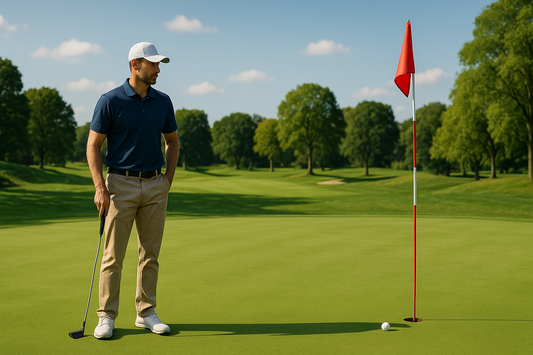I'll never forget watching a buddy three-putt from twelve feet on what looked like a perfectly flat green. After fifteen years playing the same course, he still hadn't figured out how to read the green's subtle slope toward the water hazard.
Most golfers treat every green the same way—walk up, take a quick glance, and fire away. But understanding green types and adjusting your approach is one of the fastest ways to drop your putting average.
Reading the Grass: How Turf Type Changes Everything
Before you worry about slopes and breaks, you need to understand what's growing under your feet. Different grass types create vastly different putting conditions, and ignoring turf characteristics is like trying to drive in snow with summer tires.
The grain, speed, and texture of greens change dramatically based on grass type, climate and weather conditions, as well as maintenance practices. What works on bent grass will fail miserably on Bermuda, and vice versa.
Bent Grass: The Purist's Choice

Bent grass greens are the gold standard. They’re known to be smooth, consistent, and predictable. Found primarily in northern climates, these greens roll true with minimal grain effect. The ball tracks exactly where you aim it, making bent grass ideal for aggressive putting.
Key strategies for bent grass:
-
Trust your read because the ball will hold its line
-
Focus on speed control rather than break
-
Putts generally roll smoother and farther than other grass types
-
Morning dew can slow surfaces significantly
Bermuda Grass: The Grain Game

Bermuda grass has pronounced grain that dramatically affects ball roll. The grain typically grows toward water sources or follows the direction of the afternoon sun. Putting with the grain feels like putting downhill; against the grain feels like putting through molasses.
Key strategies for Bermuda:
-
Study the grass texture—shiny areas show grain direction
-
Against the grain requires 25-30% more force
-
Side-grain breaks can overpower slope breaks
-
Late afternoon grain is most pronounced
-
The ball may "bounce" slightly on coarser Bermuda varieties
Don't forget to incorporate drills to improve putting accuracy into your training.
The Plateau Green: Your Best Friend

Plateau greens are elevated, relatively flat surfaces that look forgiving but still have subtle breaks that become pronounced as the ball slows down. The key is leaving yourself below the hole whenever possible. Even on "flat" greens, uphill putts offer better speed control.
Look at the green's edges to find the dominant slope. Imagine pouring water on the surface and visualize where it would run off? That's your break, even if it's barely visible.
Bowl Greens: The Speed Trap

Play for the center of the bowl with approach shots. Putting from the middle up the slope is almost always easier than navigating speed changes from the high side.
Turtleback Greens: The Ultimate Test

These crowned surfaces shed water and golf balls equally. The golden rule: you must be below the hole. Putting downhill on a turtleback is like stopping a marble on a basketball.
When above the hole, forget making the putt, just get close enough for a tap-in. Take an extremely light stroke and let gravity do the work.
Tiered Greens: The Chess Match

Multi-tiered greens require strategic thinking. Each level has different characteristics, and transitions between tiers can make or break your round. If the pin is on the upper tier and you're on the lower level, don't be a hero. Lag it close and take par.
Study tiered greens before hitting your approach shot. Walk around if possible and understand how tiers connect. Some transitions are gentle ramps, others are like putting up a curb.
Final Thoughts
Understanding green and turf types isn't just about making more putts—it's about avoiding big numbers. Think strategically about your short game approach shots, the putting surfaces, and your positioning. Soon, three-putts will become rare occurrences instead of regular frustrations.





